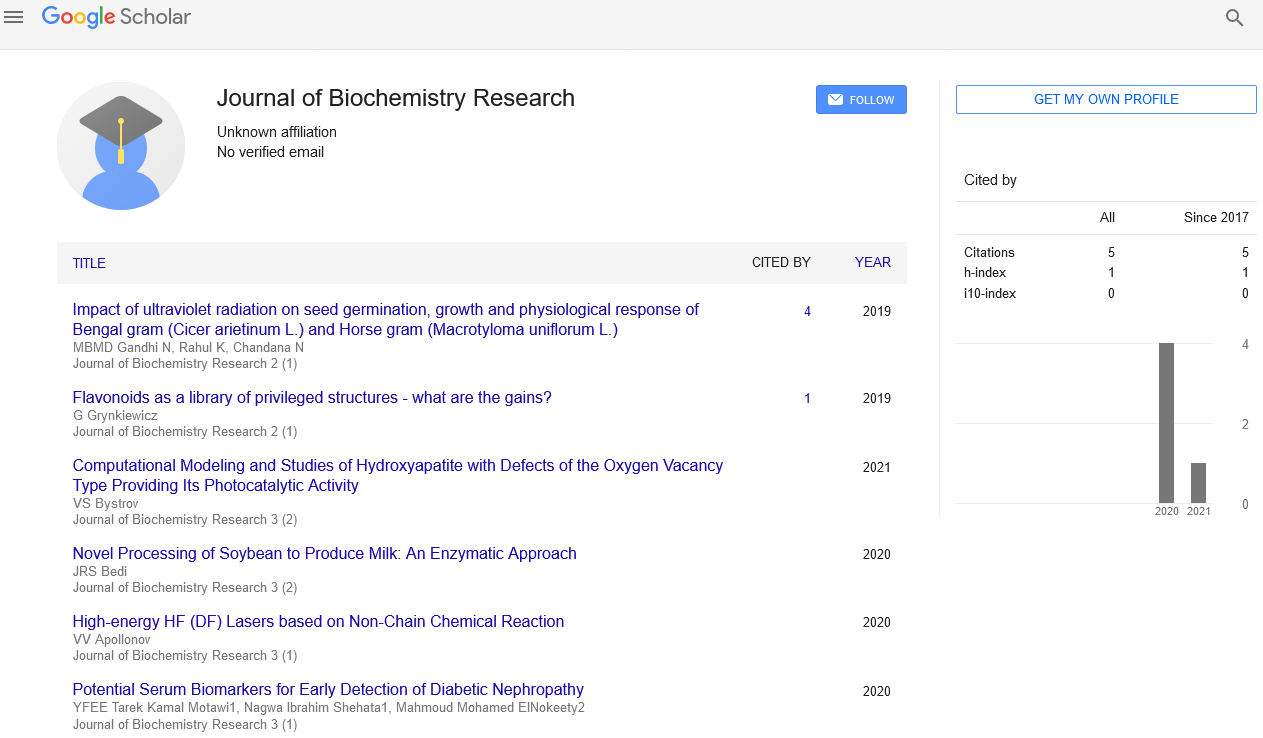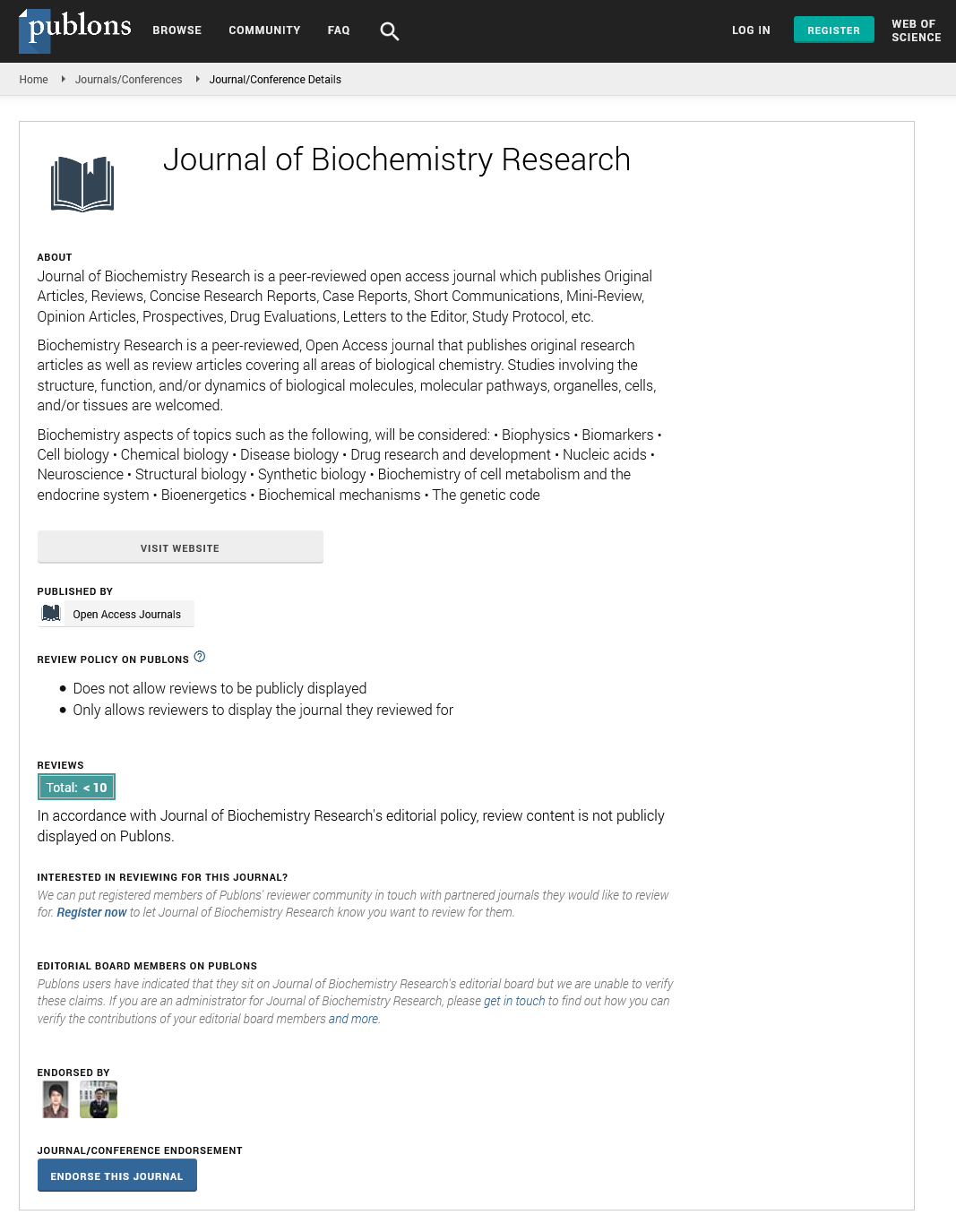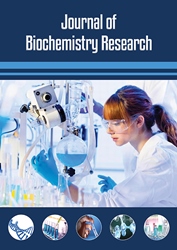Editorial - Journal of Biochemistry Research (2023) Volume 6, Issue 1
Cell Growth: Genetics and Biochemistry
Dr. Rajiya mariyam Rizbi*
Department of Genetics and Biochemistry, university of Islamic Azad University, Iran
Department of Genetics and Biochemistry, university of Islamic Azad University, Iran
E-mail: rajiyam.rizbi@gmail.com
Received: 02-Feb-2023, Manuscript No. oabr-23-89007; Editor assigned: 06-Feb-2023, PreQC No. oabr-23- 89007; Reviewed: 20- Feb-2023, QC No. oabr-23-89007; Revised: 22-Feb- 2023, Manuscript No. oabr-23-89007 (R); Published: 28-Feb-2023; DOI: 10.37532/oabr.2023.6(1).10-12
Abstract
A fertilized mouse egg and a fertilized human egg are similar in size, yet they produce animals of very different sizes. What factors in the control of cell behaviour in humans and mice are responsible for these size differences? The same fundamental question can be asked for each organ and tissue in an animal's body. What factors in the control of cell behaviour explain the length of an elephant's trunk or the size of its brain or its liver? These questions are largely unanswered, at least in part because they have received relatively little attention compared with other questions in cell and developmental biology. It is nevertheless possible to say what the ingredients of an answer must be. The size of an organ or organism depends mainly on its total cell mass, which depends on both the total number of cells and the size of the cells. Cell number, in turn, depends on the amounts of cell division and cell death. Organ and body size are therefore determined by three fundamental processes: cell growth, cell division, and cell death. Each is independently regulated both by intracellular programs and by extracellular signal molecules that control these programs. Growth kinetics the relationship between specific growth rate and the concentration of a substrate is one of the basic tools in microbiology. However, despite more than half a century of research, many fundamental questions about the validity and application of growth kinetics as observed in the laboratory to environmental growth conditions are still unanswered. For pure cultures growing with single substrates, enormous inconsistencies exist in the growth kinetic data reported. By way of surface receptor molecules and internal surveillance mechanisms, the living cell receives information about its external environment and internal state. In light of this information, the cell must determine its most appropriate course of action under the circumstances and initiate the relevant response pathways. Typical responses include growth and division, sexual reproduction, movement, differentiation and programmed cell death. Similar to a digital computer that uses bistable electrical switches to store and process information, the living cell uses bistable biochemical switches to implement its decision-making capabilities. In this review article, we describe some of the lines of thought that led, over the last 50 years, to our current understanding of cellular information processing, particularly related to cell growth, division and death.
Keywords
Cell growth • Cell division • Cell death • Genetics • Growth kinetics • Environmental growth
Introduction
In this study, we investigated changes in the proliferative capacity of the green alga Chlamydomonas reinhardtii by co-culturing with Escherichia coli. It was clarified for the first time that co-culture with C. reinhardtii and E. coli promotes the growth of C. reinhardtii and the starch production. In the future, it is expected that the co-culture system consisting of C. reinhardtii and E. coli. The living cell is an information-processing system, receiving information from its environment and making decisions about what responses are most appropriate under the circumstances [1]. It may grow and divide, move towards an attractant, differentiate into a specialized cell; it may even commit suicide. A chief goal of cell biologists is to understand the molecular mechanisms that govern these decisions. The living cell is an information-processing system, receiving information from its environment and making decisions about what responses are most appropriate under the circumstances. It may grow and divide, move towards an attractant, differentiate into a specialized cell; it may even commit suicide. A chief goal of cell biologists is to understand the molecular mechanisms that govern these decisions [2].
By co-culturing selected microalgae and heterotrophic microorganisms, the growth rate of microalgae can be improved even under atmospheric conditions with a low CO2 concentration. However, the detailed mechanism of improvement of proliferative capacity by coculture has not been elucidated [3]. In this study, we investigated changes in the proliferative capacity of the green alga Chlamydomonas reinhardtii by co-culturing with Escherichia coli. To illustrate the information-processing abilities of living cells, consider skin tissue. An epithelial cell of the skin has receptors on its surface that are sensitive to signals in the cell’s environment. Growth factors are soluble molecules that bind to receptors on the epithelial cell and give it ‘permission’ to grow and divide. In addition, an epithelial cell has receptors that bind to the extracellular collagen matrix in which the cells are embedded. When blood clots, platelets incorporated in the clot are triggered to release the contents of their secretory vesicles [4].
Genetics and Biochemistry
As a postdoctoral researcher in Murdoch Mitchison’s cell biology laboratory at the University of Edinburgh, UK, in the 1970s, Paul Nurse was looking for genes that regulate the cell-division cycle of fission yeast. He was using a genetic screen developed by Leland Hartwell to isolate cell cycle genes in budding yeast [5]. The idea is to randomly mutagenize yeast cells and look for rare mutants that get stuck uniformly in a particular phase of the cell-division cycle. Hartwell had discovered dozens of such CDC genes in budding yeast and Nurse was looking for similar genes in fission yeast. Nurse and Mitchison added another condition to the CDC phenotype: the mutant cells, though arrested in the DNA replication–division cycle, should continue to grow. Nurse discovered three genes of particular interest-cdc2, cdc9 and cdc25. Actually, cdc9 was misnamed, because it does not display the classic CDC phenotype; cdc9- mutant cells grow and divide but at an unusually small size, so the gene was renamed wee1 to properly reflect its phenotype [6].
Cell growth is not to be confused with cell division or the cell cycle, which are distinct processes that can occur alongside cell growth during the process of cell proliferation, where a cell, known as the mother cell, grows and divides to produce two daughter cells [7].
Importantly, cell growth and cell division can also occur independently of one another. During early embryonic development (cleavage of the zygote to form a morula and blastoderm), cell divisions occur repeatedly without cell growth. Conversely, some cells can grow without cell division or without any progression of the cell cycle, such as growth of neurons during axonal pathfinding in nervous system development.
These genes encode three proteins: Cdc2, Wee1 and Cdc25. From genetic evidence, Nurse reasoned that Cdc2 was responsible for driving mitosis and division in fission yeast cells. The cyclic nature of the process seemed to be due to switching Cdc2 between an active and an inactive state [8]. The switching was carried out somehow by Wee1 and Cdc25. Small cells have lots of Wee1 activity, so Cdc2 is inactive and the cells cannot divide. Large cells have lots of Cdc25 activity, which activates Cdc2 and drives the cell into mitosis and cell division.
Cell Growth and Cell Division
Many of the signal molecules that control of cellular growth are called growth factors, many of which induce signal transduction via the PI3K/ AKT/mTOR pathway, which includes upstream lipid kinase PI3K and the downstream serine/ threonine protein kinase Akt, which is able to activate another protein kinase TOR, which promotes translation and inhibits autophagy to drive cell growth. Nutrient availability influences production of growth factors of the Insulin/ IGF-1 family, which circulate as hormones in animals to activate the PI3K/AKT/mTOR pathway in cells to promote TOR activity so that when animals are well fed they will grow rapidly and when they are not able to receive sufficient nutrients they will reduce their growth rate. Recently it has been also demonstrated that cellular bicarbonate metabolism, which is responsible for cell growth, can be regulated by mTORC1 signaling [9].
Cell reproduction is asexual. For most of the constituents of the cell, growth is a steady, continuous process, interrupted only briefly at M phase when the nucleus and then the cell divide in two. The process of cell division, called cell cycle, has four major parts called phases. The first part, called G1 phase is marked by synthesis of various enzymes that are required for DNA replication. The second part of the cell cycle is the S phase, where DNA replication produces two identical sets of chromosomes. The third part is the G2 phase in which a significant protein synthesis occurs, mainly involving the production of microtubules that are required during the process of division, called mitosis. The fourth phase, M phase, consists of nuclear division (karyokinesis) and cytoplasmic division (cytokinesis), accompanied by the formation of a new cell membrane. This is the physical division of mother and daughter cells. The M phase has been broken down into several distinct phases, sequentially known as prophase, prometaphase, metaphase, anaphase and telophase leading to cytokinesis [10].
Conclusion
In multicellular animals, cell size, cell division, and cell death are carefully controlled to ensure that the organism and its organs achieve and maintain an appropriate size. Three classes of extracellular signal proteins contribute to this control, although many of them affect two or more of these processes.
After the completion of binary fission or cell reproduction involving mitosis, each daughter cell has the same amount of DNA (Z) as what the parental cell had before it replicated its DNA. These two types of cell reproduction produced two daughter cells that have the same number of chromosomes as the parental cell. Chromosomes duplicate prior to cell division when forming new skin cells for reproduction. After meiotic cell reproduction the four daughter cells have half the number of chromosomes that the parental cell originally had. This is the haploid amount of DNA, often symbolized as N. Meiosis is used by diploid organisms to produce haploid gametes. In a diploid organism such as the human organism, most cells of the body have the diploid amount of DNA, 2N. Using this notation for counting chromosomes we say that human somatic cells have 46 chromosomes (2N = 46) while human sperm and eggs have 23 chromosomes (N = 23). Humans have 23 distinct types of chromosomes, the 22 autosomes and the special category of sex chromosomes. There are two distinct sex chromosomes, the X chromosome and the Y chromosome. A diploid human cell has 23 chromosomes from that person’s father and 23 from the mother. That is, your body has two copies of human chromosome number 2, one from each of your parents. Mitogens stimulate the rate of cell division by removing intracellular molecular brakes that restrain cell-cycle progression in G1. Growth factors promote an increase in cell mass by stimulating the synthesis and inhibiting the degradation of macromolecules. Survival factors increase cell numbers by inhibiting apoptosis. Extracellular signals that inhibit cell division or cell growth, or induce cells to undergo apoptosis, also contribute to size control.
Acknowledgement
None
Conflict of Interest
None
References
- Kobayashi H. Airway biofilms: implications for pathogenesis and therapy of respiratory tract infections. Respiratory medicine 4: 241-253 (2005).
- Jones G, Steketee RW, Black RE et al. How many child deaths can we prevent this year? Lancet. 362: 65-71 (2003).
- Kumanyika S, Jeffery RW, Morabia A et al. Obesity prevention: the case for action. Int J Obes (Lond). 26: 425-36 (2002).
- Booth FW, Chakravarthy MV Physical activity and dietary intervention for chronic diseases: a quick fix after all. J Appl Physiol. 100: 1439-40 (2006).
- Beccuti G, Monagheddu C, Evangelista A et al. Timing of food intake: Sounding the alarm about metabolic impairments? A systematic review. Pharmacological Research. 125: 132–141 (2017).
- Anderson JW, Ward K High-carbohydrate, high-fiber diets for insulin-treated men with diabetes mellitus. Am J Clin Nutr. 32: 2312-21 (1979).
- Booth FW, Chakravarthy MV. Physical activity and dietary intervention for chronic diseases: a quick fix after all. J Appl Physiol. 100: 1439-40 (2006).
- Petek BJ, Loggers ET, Pollack SM et al. Trabectedin in soft tissue sarcomas. Marine Drugs. 13: 974-83 (2015).
- Beghyn T, Deprez-Poulain R, Willand N et al. Natural compounds: leads or ideas? Bioinspired molecules for drug discovery. Chem Biol Drug Des. 72: 3-15 (2008).
- Koehn FE, Carter GT The evolving role of natural products in drug discovery. Nature Reviews Drug Discovery. 4: 206-20 (2005).
Indexed at, Google Scholar, Crossref
Indexed at, Google Scholar, Crossref
Indexed at, Google Scholar, Crossref
Indexed at, Google Scholar, Crossref
Indexed at, Google Scholar, Crossref
Indexed at, Google Scholar, Crossref
Indexed at, Google Scholar, Crossref
Indexed at, Google Scholar, Crossref
Indexed at, Google Scholar, Crossref


